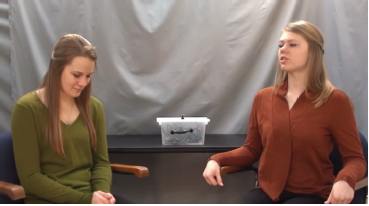Can children read body language to figure out who is in charge?

Body language can reveal a lot about the nature of relationships between people. For example, if we see two people sitting very close together, we might guess that those people are friends or close relations. If we see one person with her chin up and another person with her chin down, we might guess that the first person is more powerful than the second person.
In one study, we wanted to know if kids could look at an interaction between two people and figure out who was in charge using just body language. To do this, we showed children videos of two adults having a neutral conversation. Although their conversation did not have any clues about who is in charge, both of the adults exhibited body language that indicated they were either high or low in power. The body language included differences in posture, gaze, and loudness. We also we asked children who they thought was in charge and who they like more.
We found that by 5 years of age (but not before), children were able to use other people’s body language to determine which people have more social power. This finding underscores how sensitive children are to subtle bits of social information in their environment.
For more information about this research, contact Dr. Kristin Shutts, Living Laboratory collaborator and Director of the Social Kids Lab at University of Wisconsin-Madison.
Resources:
Try it at the Museum
Museum exhibits offer numerous opportunities for children to interact with other children role-playing and engaging in pretend play. Watch the ways that your child interacts with other children at the museum. How do children decide who goes first or how to interact with the exhibits? Do they follow other children based on body language cues to power? Do they adopt these cues if they are trying to lead? When children adopt roles in the museum exhibits, how do they use body language to express those roles?
Try it at Home
Children may adopt different types of body language when playing at home. For example, if your child is playing ‘school’ or ‘house,’ how does he or she act when they are the teacher vs. the student or the parent vs. the child? Do they use body language cues to designate who is in each role? Another way to look at how your child uses body language is by playing charades. When your child is given a character to act out, how does he or she use body language to express that character?